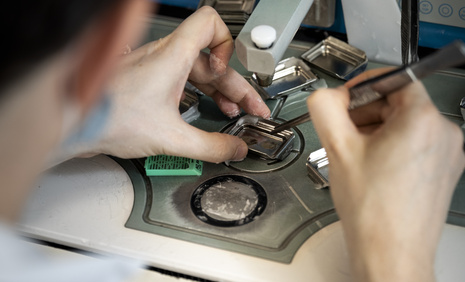Team
Chemistry for Nucleic acid recognition
Thematic areas of research:
Image

To top
Team
ANTON GRANZHAN
Chemistry for Nucleic acid recognition
The main missions of our team include the design, synthesis, and studies of novel small-molecule ligands and probes able to recognize unusual DNA and RNA structures (in particular, damaged DNA structures representing intermediates in enzymatic DNA repair), as well as elucidation of their biological effects in cellular models. We assume that these compounds could interfere with the native functions of nucleic acids or enzymatic DNA repair, thereby finding applications in cancer therapy.
Members
Past members






Image

CORALIE CARON
PhD Student
Image

ANNE CUCCHIARINI
Engineer assistant
Image

RAINBOW LO
Post-Doctoral Researcher
Image

JAIME FRANCO PINTO
PhD Student
Image

OKSANA REZNICHENKO
PhD Student
Image

MICHELA ZUFFO
Post-Doctoral Researcher
Collaborations
Key publications
All publications
-
Acridine–O6-benzylguanine hybrids: Synthesis, DNA binding, MGMT inhibition and antiproliferative activityEuropean Journal of Medicinal Chemistry
-
-
Identifying G-Quadruplex-DNA-Disrupting Small MoleculesJournal of the American Chemical Society
-
-
-














